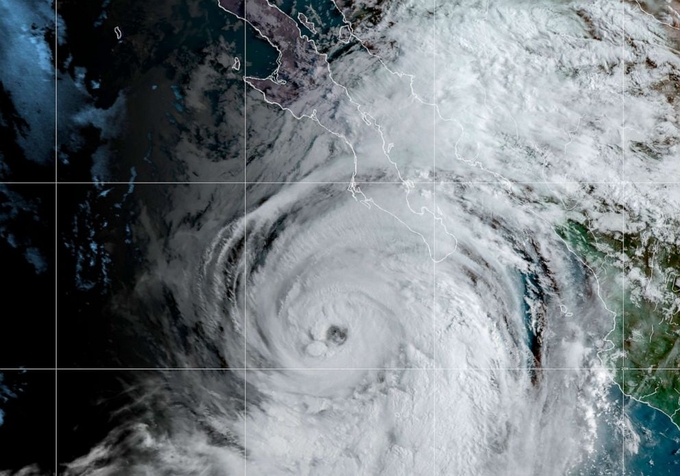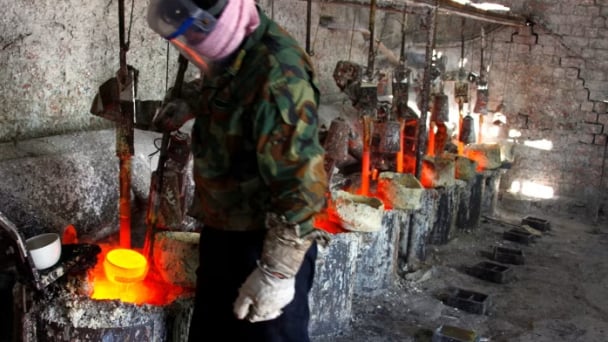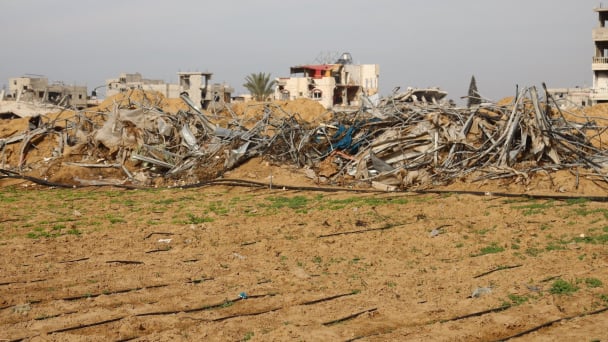June 14, 2025 | 20:47 GMT +7
June 14, 2025 | 20:47 GMT +7
Hotline: 0913.378.918
June 14, 2025 | 20:47 GMT +7
Hotline: 0913.378.918

This satellite image made available by NOAA shows Hurricane Kay off the Pacific coast of Mexico, Sept. 7, 2022.
Changing temperatures around the world have led to several climate emergencies so far in 2022, from historic flooding in Pakistan that's displaced millions of people to the rapid melting of a major glacier in Antarctica.
Parts of the world are expected to experience severe weather for the rest of the year and into 2023, as part of a rare "triple dip La Niña" event, according to the World Meteorological Organization (WMO).
What is the "triple-dip" La Niña?
A "triple-dip" La Niña is a multiyear cooling of the surface temperature of the equatorial Pacific Ocean, which can cause droughts, fierce winds and heavy rainfall.
According to WMO, the current La Niña is projected to span three consecutive northern hemisphere winters. It began in September 2020.
If it continues for the next six months, it will be the first "triple-dip" La Niña event of the 21st century, WMO says.
"It is exceptional to have three consecutive years with a la Niña event. Its cooling influence is temporarily slowing the rise in global temperatures – but it will not halt or reverse the long-term warming trend," Petteri Taalas, the secretary-general of WMO, said in a recent report.
La Niñas are usually preceded by El Niño, a weather pattern that warms the surface of the eastern tropical Pacific Ocean; however, an El Niño event did not occur before the current La Niña, according to Michelle L'Heureux, a climate scientist for the National Oceanic and Atmospheric Administration (NOAA).
Has it happened before? Will it happen again?
While this would be the first "triple-dip" La Niña this century, it's not unprecedented for the weather pattern to last more than nine months to a year, which is typical for a La Niña, according to NOAA.
According to the National Centers for Environmental Prediction, last century, La Niñas occurred several times between 1903 to 2010 and 2010 to 2012.
La Niña's global effect
La Niña occurrences have a devastating global impact because of its effect on weather and climate, Richard Seager, Ph.D., a research professor at Lamont-Doherty Earth Observatory of Columbia University, told ABC News.
The weather has caused droughts in North and South America and equatorial eastern Africa. La Niña is also linked to floods in Asia, such as the devastating floods Pakistan has endured since June, Seager said.
NOAA forecasts that the expected La Niña winter season, which is from December 2022 to February 2023, in the U.S. won't be atypical, as the northern Plains, Rockies and Pacific Northwest will also experience cooler temperatures; the South will be hotter than normal and the East Coast may be warmer than it usually is during that time of the year, according to L'Heureux.
Human-induced climate change?
According to WMO, naturally occurring climate events are viewed as happening because of "human-induced climate change," leading to global temperatures and extreme weather conditions.
"The worsening drought in the Horn of Africa and southern South America bear the hallmarks of La Niña, as does the above average rainfall in South-East Asia and Australasia," Taalas said in the report. "The new La Niña Update, unfortunately, confirms regional climate projections that the devastating drought in the Horn of Africa will worsen and affect millions of people."
According to Seager, it isn't safe to say that the changing climate causes this type of La Niña pattern because it has happened before, but he acknowledges that climate change may play a role.
"The record of sea surface temperatures we have that goes back a century and a half shows that the tropical Pacific Ocean has been moving in the direction that, although it warmed up in the west, it hasn't warmed up in the eastern equatorial pacific," Seager said. "So, that trend in sea surface temperatures is making these persistent La La Niñas more likely."
(ABC News)

(VAN) Extensive licensing requirements raise concerns about intellectual property theft.

(VAN) As of Friday, a salmonella outbreak linked to a California egg producer had sickened at least 79 people. Of the infected people, 21 hospitalizations were reported, U.S. health officials said.

(VAN) With the war ongoing, many Ukrainian farmers and rural farming families face limited access to their land due to mines and lack the financial resources to purchase needed agricultural inputs.

(VAN) Vikas Rambal has quietly built a $5 billion business empire in manufacturing, property and solar, and catapulted onto the Rich List.

(VAN) Available cropland now at less than five percent, according to latest geospatial assessment from FAO and UNOSAT.

(VAN) Alt Carbon has raised $12 million in a seed round as it plans to scale its carbon dioxide removal work in the South Asian nation.

(VAN) Attempts to bring down the price of the Japanese staple have had little effect amid a cost-of-living crisis.